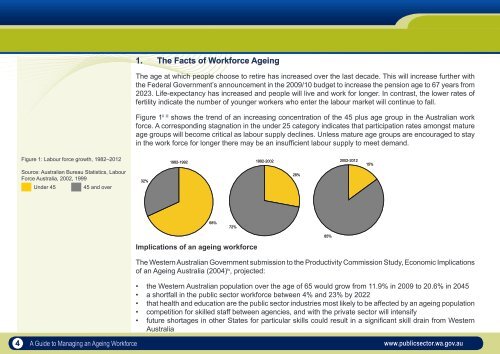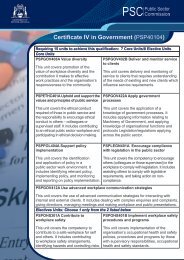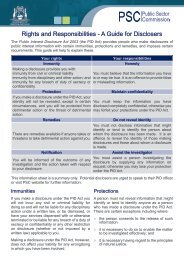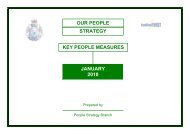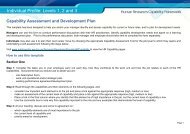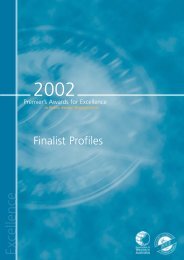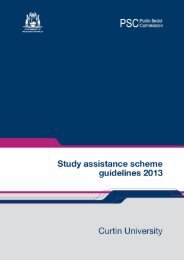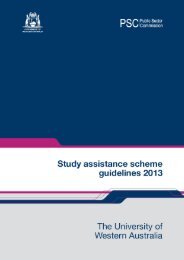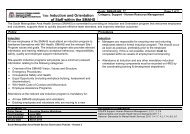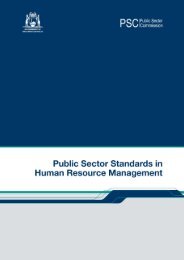A Guide to Managing an Ageing Workforce - Public Sector ...
A Guide to Managing an Ageing Workforce - Public Sector ...
A Guide to Managing an Ageing Workforce - Public Sector ...
You also want an ePaper? Increase the reach of your titles
YUMPU automatically turns print PDFs into web optimized ePapers that Google loves.
1. The Facts of <strong>Workforce</strong> <strong>Ageing</strong><br />
The age at which people choose <strong>to</strong> retire has increased over the last decade. This will increase further with<br />
the Federal Government’s <strong>an</strong>nouncement in the 2009/10 budget <strong>to</strong> increase the pension age <strong>to</strong> 67 years from<br />
2023. Life-expect<strong>an</strong>cy has increased <strong>an</strong>d people will live <strong>an</strong>d work for longer. In contrast, the lower rates of<br />
fertility indicate the number of younger workers who enter the labour market will continue <strong>to</strong> fall.<br />
Figure 1 ii iii shows the trend of <strong>an</strong> increasing concentration of the 45 plus age group in the Australi<strong>an</strong> work<br />
force. A corresponding stagnation in the under 25 category indicates that participation rates amongst mature<br />
age groups will become critical as labour supply declines. Unless mature age groups are encouraged <strong>to</strong> stay<br />
in the work force for longer there may be <strong>an</strong> insufficient labour supply <strong>to</strong> meet dem<strong>an</strong>d.<br />
Figure 1: Labour force growth, 1982–2012<br />
1982-1992<br />
1992-2002<br />
2002-2012<br />
15%<br />
Source: Australi<strong>an</strong> Bureau Statistics, Labour<br />
Force Australia, 2002, 1999<br />
Under 45<br />
45 <strong>an</strong>d over<br />
32%<br />
28%<br />
68%<br />
72%<br />
85%<br />
Implications of <strong>an</strong> ageing workforce<br />
The Western Australi<strong>an</strong> Government submission <strong>to</strong> the Productivity Commission Study, Economic Implications<br />
of <strong>an</strong> <strong>Ageing</strong> Australia (2004) iv , projected:<br />
• the Western Australi<strong>an</strong> population over the age of 65 would grow from 11.9% in 2009 <strong>to</strong> 20.6% in 2045<br />
• a shortfall in the public sec<strong>to</strong>r workforce between 4% <strong>an</strong>d 23% by 2022<br />
• that health <strong>an</strong>d education are the public sec<strong>to</strong>r industries most likely <strong>to</strong> be affected by <strong>an</strong> ageing population<br />
• competition for skilled staff between agencies, <strong>an</strong>d with the private sec<strong>to</strong>r will intensify<br />
• future shortages in other States for particular skills could result in a signific<strong>an</strong>t skill drain from Western<br />
Australia<br />
4<br />
A <strong>Guide</strong> <strong>to</strong> <strong>M<strong>an</strong>aging</strong> <strong>an</strong> <strong>Ageing</strong> <strong>Workforce</strong><br />
www.publicsec<strong>to</strong>r.wa.gov.au


